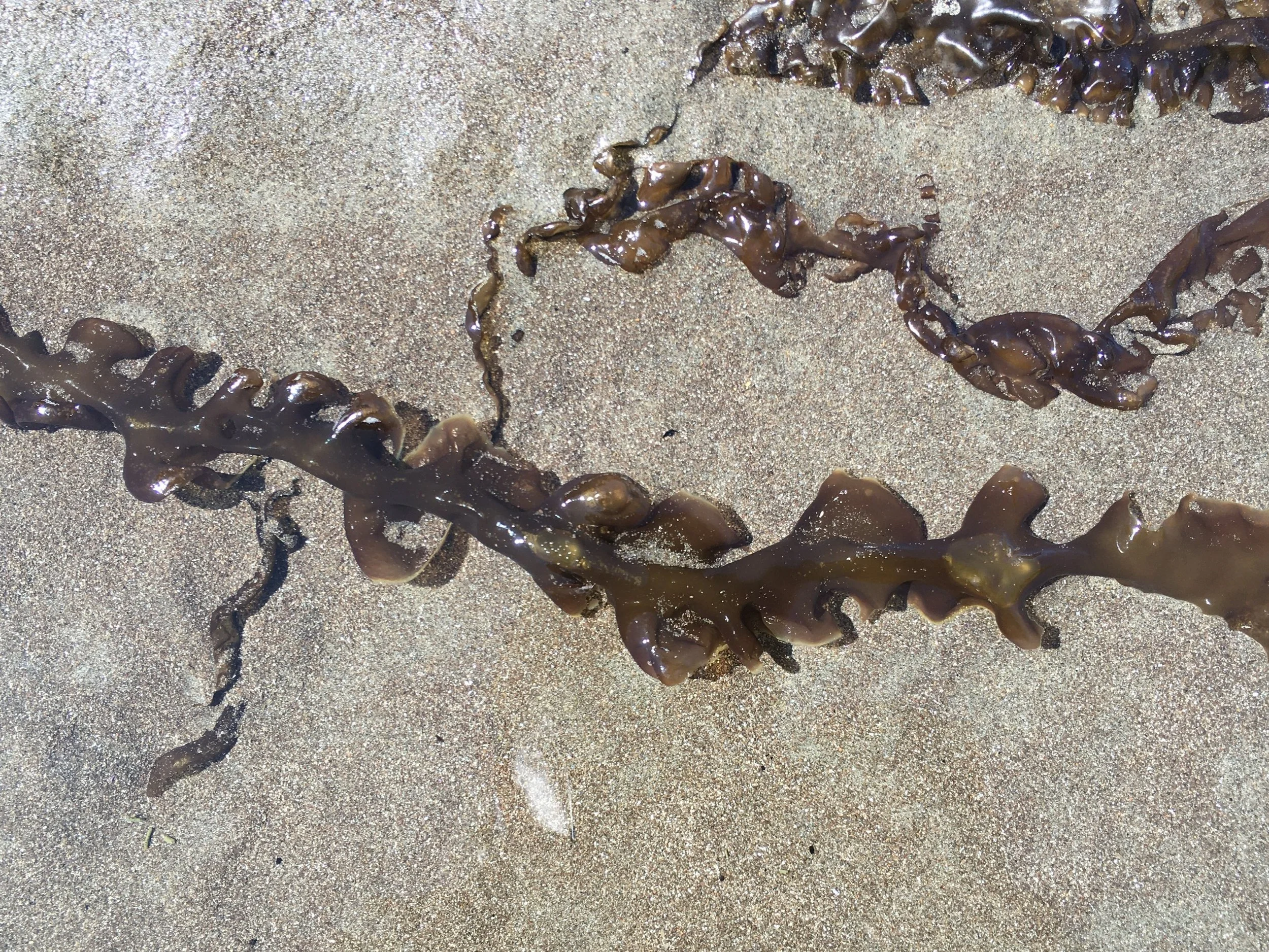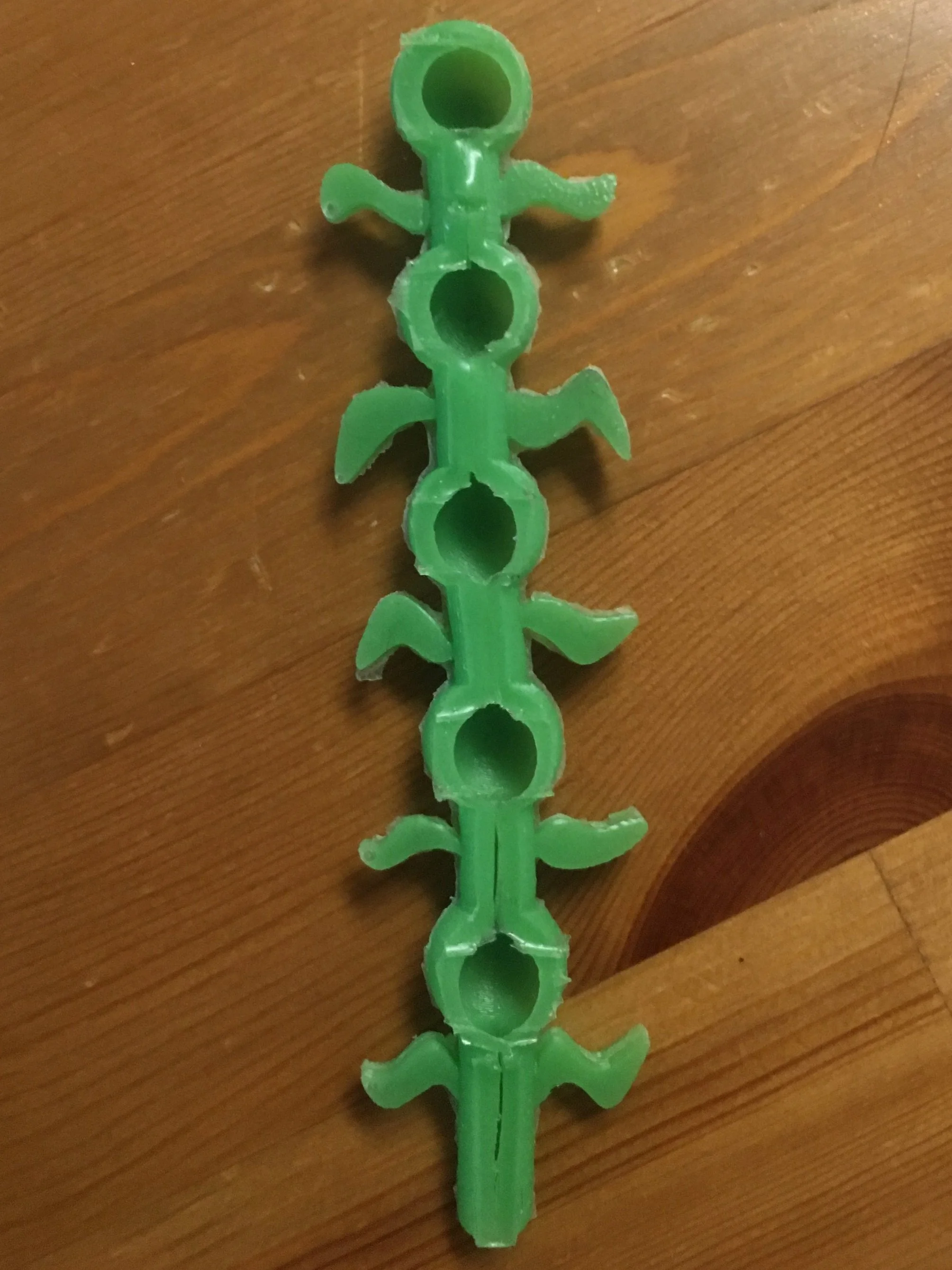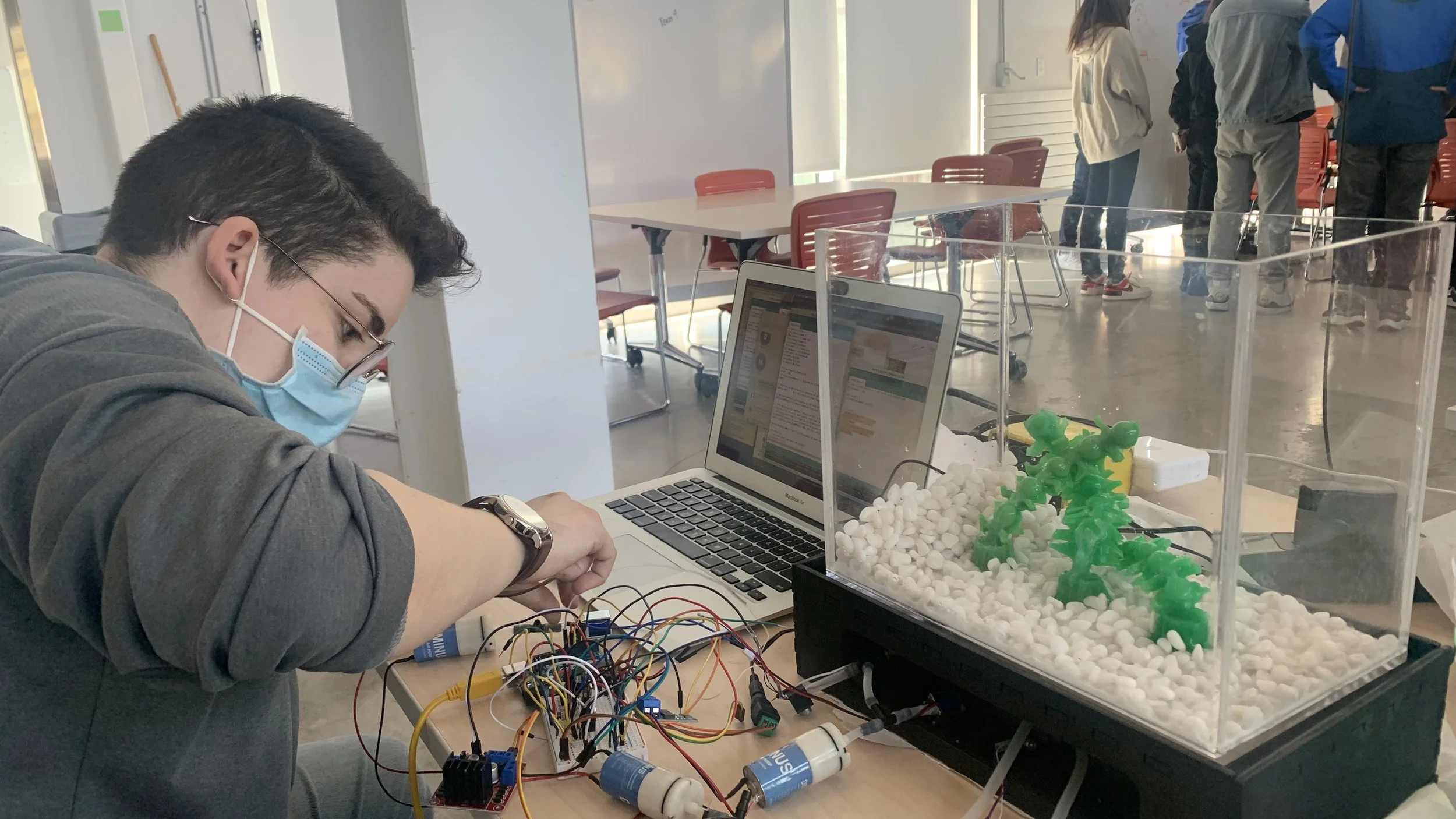Feral Design: Future Habitats
An experiment in soft robotics and speculative futures
Our model of inflatable, illuminated kelp, immersed in a self-constructed tank.
This project was a collaboration between myself and classmate Chia Ling Chen. Our course on Designing Emerging Technologies spent several weeks focusing on soft robotics.
A video demonstration of inflatable and illuminated kelp in our scale model
Neither of us had cast silicone before and we experimented extensively when designing and 3D printing molds and ways to embed electronics.
We were inspired by the air bladders of giant kelp and seaweed. We wanted to create a model of speculative infrastructure from a future where climate change and sea level rise results in humans living underwater. We thought about how the physical environment and infrastructure could support human activity in a way that did not disrupt the environment. We imagined streetlights re-design to emulate giant kelp, and to inflate and light up when a person goes by, but not when fish or other sea creatures are around.
My classmate Chia Ling created this video rendering to depict what we envisioned for speculative infrastructure.
Casting green silicone in the first mold I designed with CAD.
The second iteration for the mold I designed with CAD to cast the silicone for our kelp. This is a three part mold, and allowed us to seal off the bladders with a single sheet of silicone, instead of putting the two hemispheres together as in the previous iteration.
Half of the kelp cast in the revised mold, before the addition of electronics and silicon tubing.
Here I am reconnecting our electronics to the kelp and tank.
I figured out the electronics to inflate and light up the kelp stalks in sequence. We used an arduino uno, with mini air pumps, neopixel LEDs, and solenoids to release the air.






